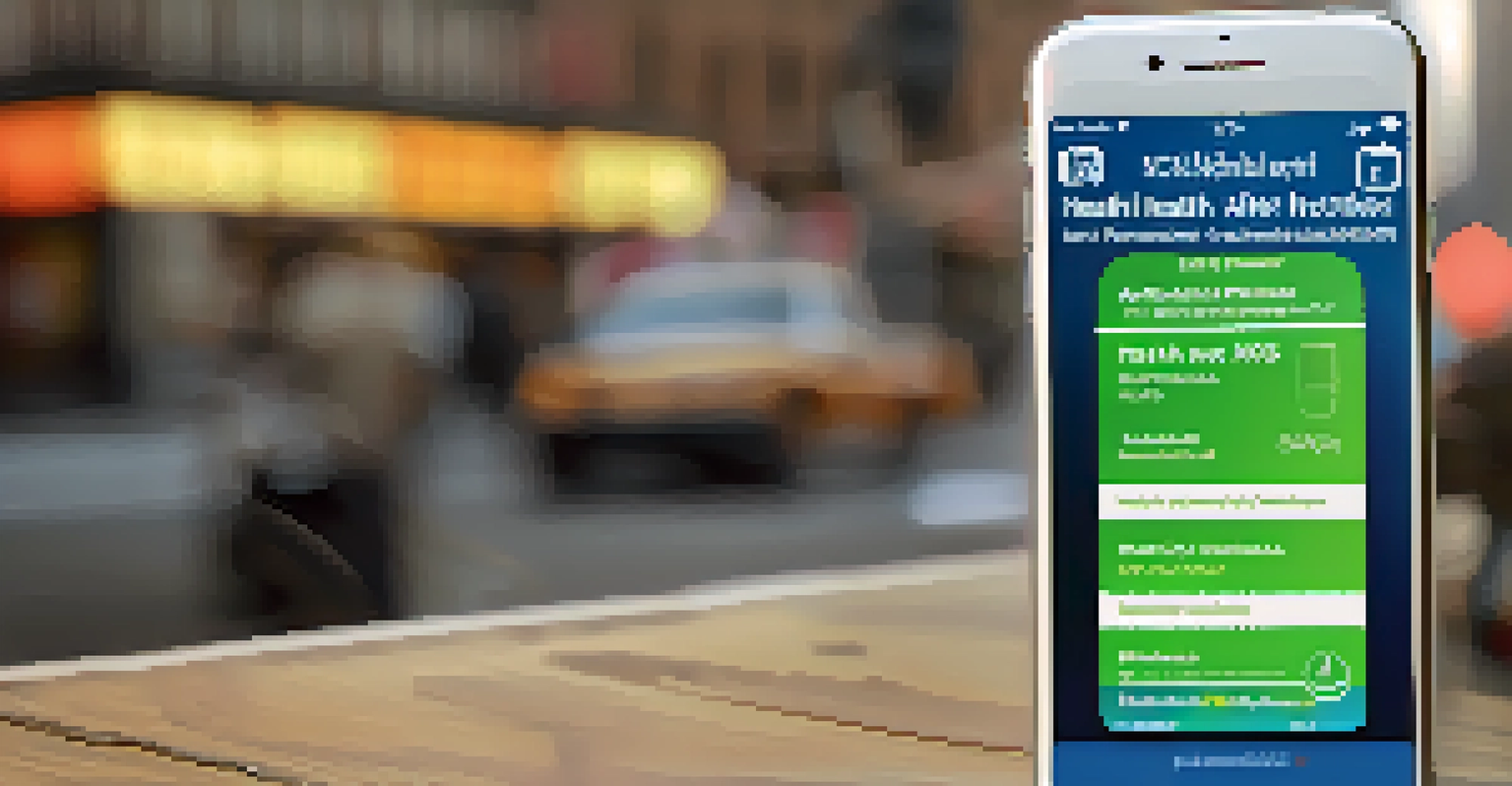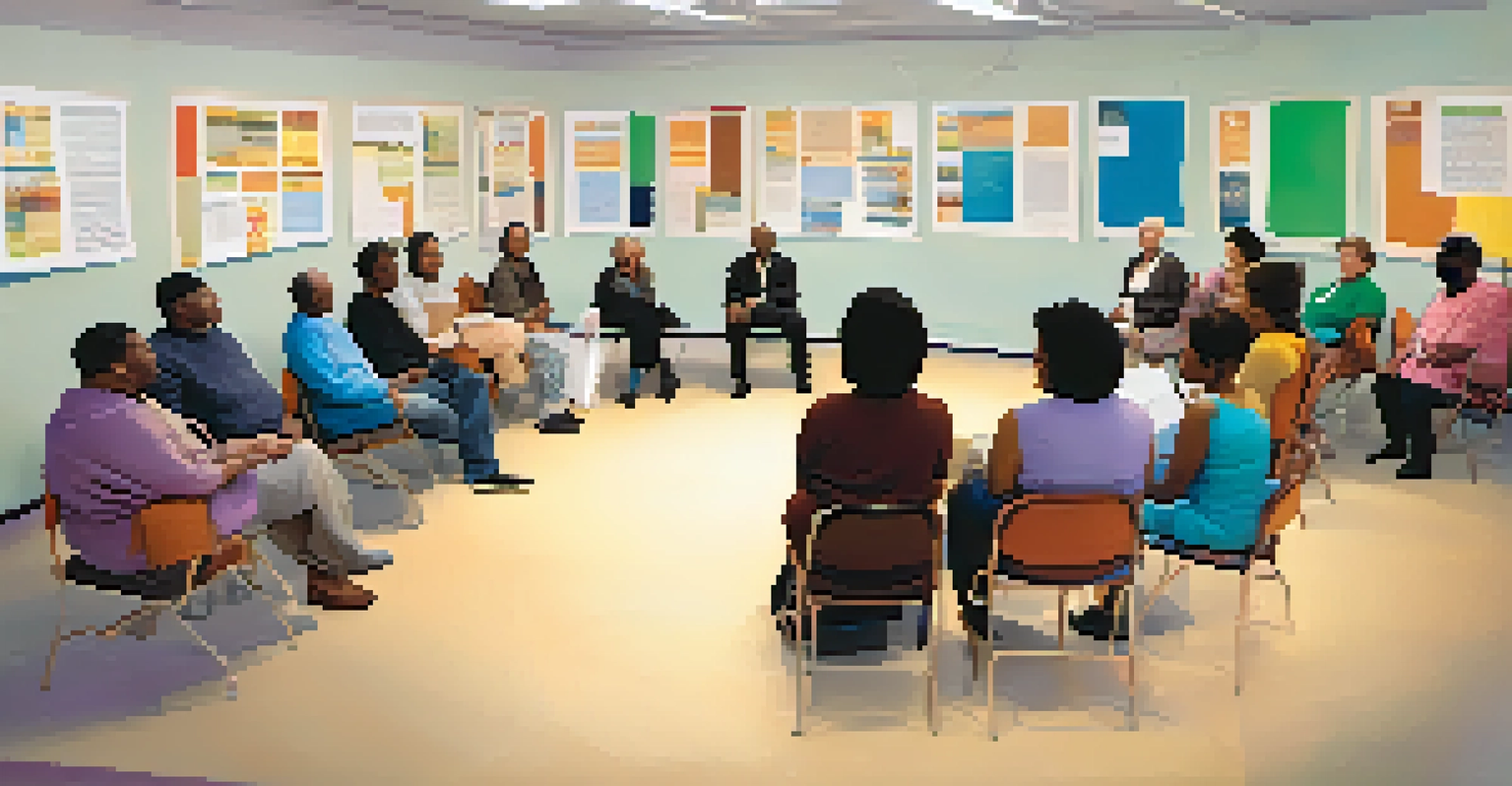Public Health Crises: NYC's Communication Framework Explored

Understanding Public Health Crises in NYC
Public health crises can take many forms, from outbreaks of infectious diseases to environmental disasters. In a bustling metropolis like New York City, the stakes are incredibly high. The city's diverse population means that effective communication is vital to ensure that everyone receives critical health information promptly.
An informed community is a healthy community.
These crises often require not just a rapid response but also a well-coordinated communication strategy. This strategy helps to inform the public, dispel misinformation, and guide community actions. Understanding the unique challenges NYC faces during such crises is essential to appreciate the communication framework in place.
By examining past public health crises, we can grasp the complexities of communication in a vibrant urban setting. Each incident offers valuable lessons that shape NYC's approach to future health emergencies, ensuring the city is better prepared to protect its residents.
The Role of NYC Health Department
The NYC Health Department serves as the backbone of the city's public health communication. It plays a crucial role in gathering data, analyzing trends, and disseminating information during crises. The department's expertise ensures that the public is informed with accurate and timely updates.

In addition to managing health information, the Health Department collaborates with various stakeholders, including community organizations and healthcare providers. This collaboration helps to amplify messages and reach different communities effectively. By leveraging local networks, the department can tailor its communication strategies to specific populations.
NYC's Health Dept. Drives Communication
The NYC Health Department plays a crucial role in managing public health crises by gathering data, collaborating with stakeholders, and disseminating timely information.
Moreover, the Health Department utilizes various platforms, including social media, press releases, and community outreach. This multi-channel approach ensures that critical information reaches residents wherever they are, fostering trust and engagement during health emergencies.
Effective Messaging Strategies in Crises
During public health crises, crafting effective messages is paramount. NYC's communication framework emphasizes clarity, simplicity, and relevance in its messaging. This approach helps prevent confusion and ensures that crucial information is easily understood by all.
In the face of a crisis, clear communication is as important as the response itself.
For instance, using plain language and avoiding jargon allows messages to resonate with a broader audience. Visual aids, such as infographics, can also enhance understanding and retention of information. By prioritizing accessibility, NYC aims to engage every resident, regardless of their background.
Additionally, the timing of messages is critical. The city ensures that information is disseminated promptly to address evolving situations and minimize public anxiety. This proactive approach not only informs the public but also builds confidence in the city’s ability to manage health crises.
Utilizing Technology for Communication
In today's digital age, technology plays a pivotal role in public health communication. NYC leverages various technological tools to reach its diverse population efficiently. From mobile apps to social media platforms, technology enhances the city's ability to disseminate information rapidly.
For example, real-time updates via social media keep residents informed about ongoing health crises and recommended actions. SMS alerts can deliver critical information directly to people's phones, ensuring that even those without internet access receive essential updates. This tech-savvy approach is crucial in a fast-paced city where time is of the essence.
Technology Enhances Crisis Messaging
NYC utilizes technology, such as social media and mobile apps, to rapidly inform residents about health crises and recommended actions.
Moreover, data analytics helps the city understand communication effectiveness. By assessing which messages resonate best with different communities, NYC continuously refines its strategies. This adaptability ensures that the city remains responsive to the needs of its residents during public health emergencies.
Community Engagement and Feedback Loops
Engaging the community is a cornerstone of NYC's public health communication framework. The city actively seeks feedback from residents to improve its messaging and outreach strategies. By fostering a two-way communication channel, NYC ensures that it addresses community concerns effectively.
Community forums, surveys, and social media interactions allow residents to voice their opinions and experiences. This feedback helps the city tailor its communication efforts to better meet the needs of its diverse population. By listening to the community, NYC can build trust and credibility during health crises.
Additionally, involving community leaders in communication efforts can amplify messages and enhance reach. Local influencers often have established relationships with residents, making their endorsements particularly impactful. This collaborative approach strengthens the city's overall response during public health emergencies.
Addressing Misinformation Challenges
In the age of information overload, combating misinformation is a significant challenge during public health crises. NYC faces the dual task of providing accurate information while countering false narratives that can spread rapidly. This challenge necessitates a strategic approach to communication.
The city employs fact-checking initiatives and collaborates with trusted media outlets to clarify misinformation. By providing clear and consistent messaging, NYC aims to minimize confusion and build public confidence. This proactive stance is essential in maintaining community trust during health emergencies.
Community Engagement is Essential
Engaging the community and seeking feedback are vital for NYC to tailor its communication strategies and build trust during public health emergencies.
Moreover, educational campaigns play a crucial role in empowering residents to discern credible sources. By equipping the public with the tools to identify misinformation, NYC fosters a more informed community. This empowerment not only aids in crisis management but also contributes to long-term public health literacy.
Lessons Learned and Future Directions
Every public health crisis offers valuable lessons that can inform future communication strategies. NYC continuously assesses its response to identify areas for improvement. This reflective practice is essential for evolving the city's communication framework to better serve its residents.
For example, the COVID-19 pandemic underscored the importance of timely and transparent communication. Moving forward, NYC aims to enhance its crisis communication protocols, ensuring that they are adaptable to various situations. This commitment to improvement reflects the city's resilience and dedication to public health.

Looking ahead, integrating new technologies and fostering community partnerships will be vital in shaping NYC's communication landscape. By prioritizing innovation and collaboration, the city can enhance its preparedness for future public health crises, ultimately safeguarding the health and well-being of its residents.